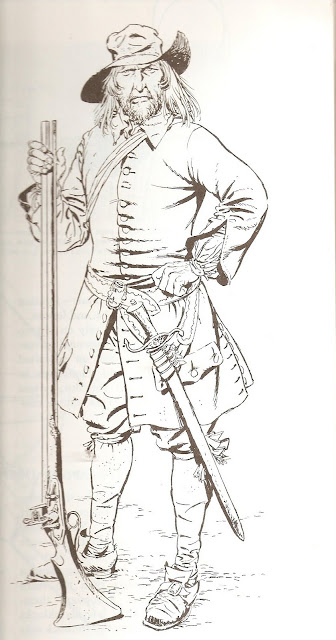The Ranger occupation goes all the way to the late medieval period. There is little doubt in my mind that Tolkien based his Rangers (Strider) on these early English Rangers. Searching for these Forest Rangers brings up other terms such as Verderers and Foresters, and although these people did patrol the forests and protect the game, they were not actually mentioned as Rangers until much later on.
The Ranger's job was to patrol the forests and to look for tresspassers and poachers, but also apparently his job was to protect the forest inhabitants, to discourage robbers etc from raiding woodland dwellings and hamlets. This is exactly what Aragorn did in Lord Of The Rings, and this occupation extends right into the New World and the 18th century.
Rangers were hired to patrol the countryside looking for any enemy and raiding parties of Indians or French and Indians. These were individuals who were expected to warn the settlers and towns people in advance, and to cause as much damage to these enemy as was practically possible.
Later these Rangers were formed into groups or band and aventually became formal units such as Rogers Rangers.
These early Rangers were undoubtably woodsmen, no one else would have the experience to carry out such missions in wilderness areas. So woodsman clothing and equipment would be the basis for this Living History persona, but these charracters were also individuals, there was no uniforms or rules and regulations. Even the early milkitary Rangers were individuals and it is said that it took a good officer to get the best out of his men and maintain some form of discipline.
Dolyng, Ranger of, 6S5. (13th century)
http://sdrc.lib.uiowa.edu/patentrolls/r2v5/index/Richard2vol5page0924.pdf





.JPG)

No comments:
Post a Comment